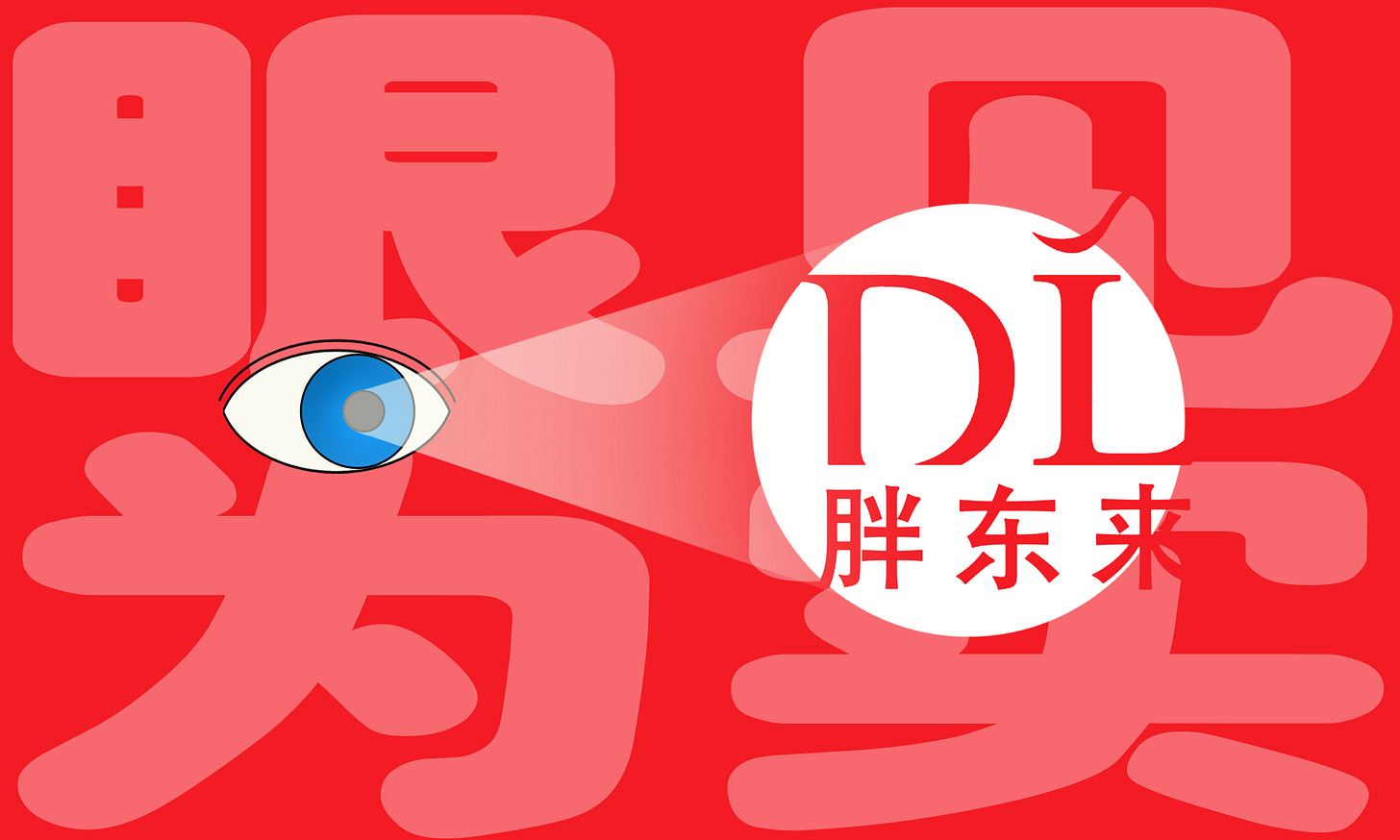"Seeing is believing" — Phrase of the week
A mall in a fourth-tier city attracts shoppers from across China

Our phrase of the week is: "seeing is believing" (眼见为实 yǎn jiàn wéi shí).
Context
On the afternoon of October 13, Sīmǎ Nán 司马南, a well-known Chinese commentator and online influencer, held a live broadcast from a mall in Xuchang (许昌), a small fourth-tier city in Henan province.
The outspoken influencer began his broadcast at 5:10pm, but was interrupted after only 13 minutes. Footage from the livestream showed staff on site intervening and asking him to leave, saying that live broadcasts were not permitted.
The mall is Pangdonglai (胖东来 pàng dōng lái), which translates as "Fat Donglai" in English, a reference to the name of the founder, Yú Dōnglái 于东来.
Pangdonglai is a renowned Chinese retail brand that has made a name for itself through its customer-centric approach and high-quality service. With a total of nine malls in Xuchang (许昌) and Xinxiang (新乡), both located in Henan, Pangdonglai has gained a reputation for innovative retail strategies and an exceptional shopping experience.
Pangdonglai prioritizes customer satisfaction and experience.
One of its customer-centric policies, as influencer Sima Nan discovered, is the banning of live broadcasts from inside its mall to protect customer privacy and personal safety.
Pangdonglai has become so popular it’s become a tourist destination in its own right, with fans planning weekend breaks to Xuchang (a fourth-tier city) primarily to visit the mall.
One consumer blogger shared their experience of preparing for a weekend there earlier this year:
"I planned for nearly a month before I traveled to Pangdonglai. Just for the preliminary research on the brand, I spent almost two weeks going through all the news reports and official websites.
In the investment community, there are simply too many stories about Pangdonglai. Is this company really extraordinary? Or is it actually overrated? The only way to find out is to pay a personal visit the mall itself, since 'seeing is believing.'"
为了胖东来之行,规划了将近一个月,光是针对胖东来的案头研究,就花了将近两周,翻遍了胖东来所有新闻报道和官方网站。投资行业里,有关胖东来的故事实在太多。这个企业是不是太过神仙了?其实过誉了?只能去一趟胖东来,“眼见为实”。
Wèile Pàngdōnglái zhī xíng, guīhuà le jiāngjìn yí gè yuè, guāng shì zhēnduì Pàngdōnglái de àntóu yánjiū, jiù huā le jiāngjìn liǎng zhōu, fān biàn le Pàngdōnglái suǒyǒu xīnwén bàodào hé guānfāng wǎngzhàn. Tóuzī hángyè lǐ, yǒuguān Pàngdōnglái de gùshi shízài tài duō. Zhège qǐyè shì búshì tài guò shénxiān le? Qíshí guòyù le? Zhǐnéng qù yí tàng Pàngdōnglái, “yǎn jiàn wéi shí.”
And with that, we have our Sinica Phrase of the Week.
What it means
"Seeing is believing" is a four-character idiom in Chinese, which directly translates as "eyes" (眼 yǎn) "see" (见 jiàn) "is" (为 wéi) "true" (实 shí).
The Chinese idiom carries a meaning and connotation similar to the English adage, "seeing is believing." The English phrase originated in the 17th century and is attributed to English clergyman Thomas Fuller, who stated, “Seeing is believing, but feeling is truth.”
The Chinese version of the phrase is much older, attributed to Confucius (Kǒngzǐ, 孔子), China’s most influential philosopher and educator, who lived from 551 to 479 BCE.
The idiom is the second half of an eight-character expression, "What is heard is often false, while what is seen is real" (耳听为虚,眼见为实 ěr tīng wéi xū, yǎn jiàn wéi shí).
It's traced back to the Analects (论语), a collection of sayings and ideas attributed to Confucius and his disciples, compiled during the Warring States period (475 BCE to 221 BCE).
The source text of the phrase is found in the chapter, "Gong Yechang" (公冶长):
"Initially, I believed in people based on their words and trusted their actions; now, I listen to their words and observe their actions.
This is how Yu changed my approach."
“始吾于人也,听其言而信其行;今吾于人也,听其言而观其行。于予与改是。”
“Shǐ wú yú rén yě, tīng qí yán ér xìn qí xíng; jīn wú yú rén yě, tīng qí yán ér guān qí xíng. Yú yǔ yǔ gǎi shì.”
These words were spoken by Confucius about one of his disciples, Zǎi Yǔ 宰予.
The master was criticizing his student for falling asleep during one of his lessons. Until that moment, Confucius had believed Zai Yu to be a good student, relying on his eloquence and what he said.
However, the student's actions—or lack thereof—told a different story, prompting Confucius to realize that "seeing is believing, hearing is deceiving." He concluded that trust should be based on a person's actions, not just their words.
In modern Chinese, the eight-character composition is still used, but the shorter phrase, "seeing is believing", is more common in spoken language. It can refer to both places and people.
As Pangdonglai has shown in China today, with the right branding and customer experience, people can be convinced to travel from all over the country to "see it to believe it."
Andrew Methven is the author of RealTime Mandarin, a resource to help you learn contemporary Chinese in context, and stay on top of the latest language trends in China.
Read more about how this story is being discussed in the Chinese media in this week’s RealTime Mandarin.


